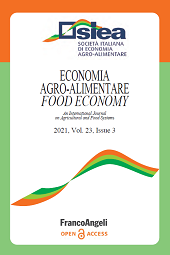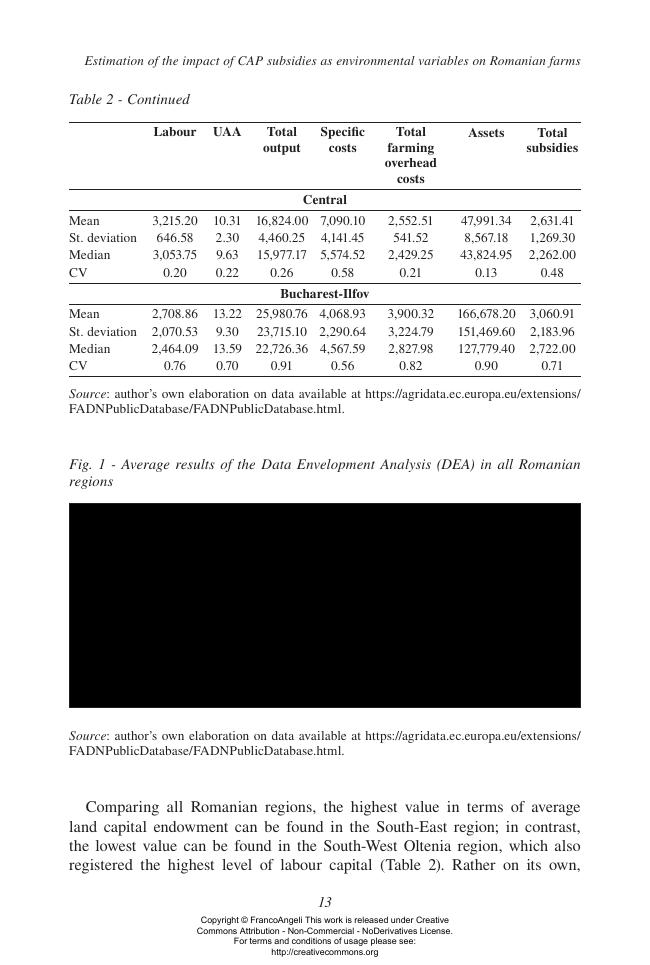Estimation of the impact of cap subsidies as environmental variables on Romanian farms
P. 1-24
Romanian agriculture is characterised by the presence of small farm enterprises, with an average value of land capital of less than 5 hectares in more than 95% of cases. The aim of this research was to assess the level of technical efficiency in farming through a non-parametric approach such as the Data Envelopment Analysis (DEA), and also to estimate the impact that financial subsidies allocated under the first and second pillars of the Common Agricultural Policy (CAP) have had on the technical efficiency.
In the application of this analysis, these two inputs have been considered as environmental variables in order to evaluate their effect in fostering the technical efficiency using a two-stage dea method. The results have revealed the pivotal impact of financial subsidies disbursed through the first and second pillars of cap in enhancing technical efficiency in the Romanian farms included in the fadn dataset. In contrast, the subsidies disbursed under only the second pillar of the CAP in the framework of rural development have not been found to have had any discernible effect on the technical efficiency of Romanian farms.
The novelty of this quantitative approach in the estimation of technical efficiency lies in its focus on the role of environmental variables as drivers in affecting the technical efficiency of farms, defining, in addition, how important they are in addressing efficiency and in shifting enhancing the function of technical efficiency on farms as well.Some conclusions were drawn: it is important to increase the endowment of subsidies for rural development and as well as decoupled payments in order to raise the level of technical efficiency in Romanian farms.
At the same time, the findings suggest the need for Romanian farmers to reduce the level of certain inputs, such as labour, on the one hand, while on the other, increasing the dimension size of farms in terms of land capital and encouraging greater investment in labor-saving technology, even if significant imbalances remain between different Romanian regions, both in terms of the level of technical efficiency achieved and also in terms of output yield, and in the endowment of land capital and other assets. [Publisher's text]
Forma parte de
Economia agro-alimentare : XXIII, 3, 2021-
Artículos del mismo número (disponibles individualmente)
-
Información
Código DOI: 10.3280/ecag3-oa12772
ISSN: 1972-4802
KEYWORDS
- Data Envelopment Analysis, Technical efficiency, Separability test, Rural Development Programme, FADN



